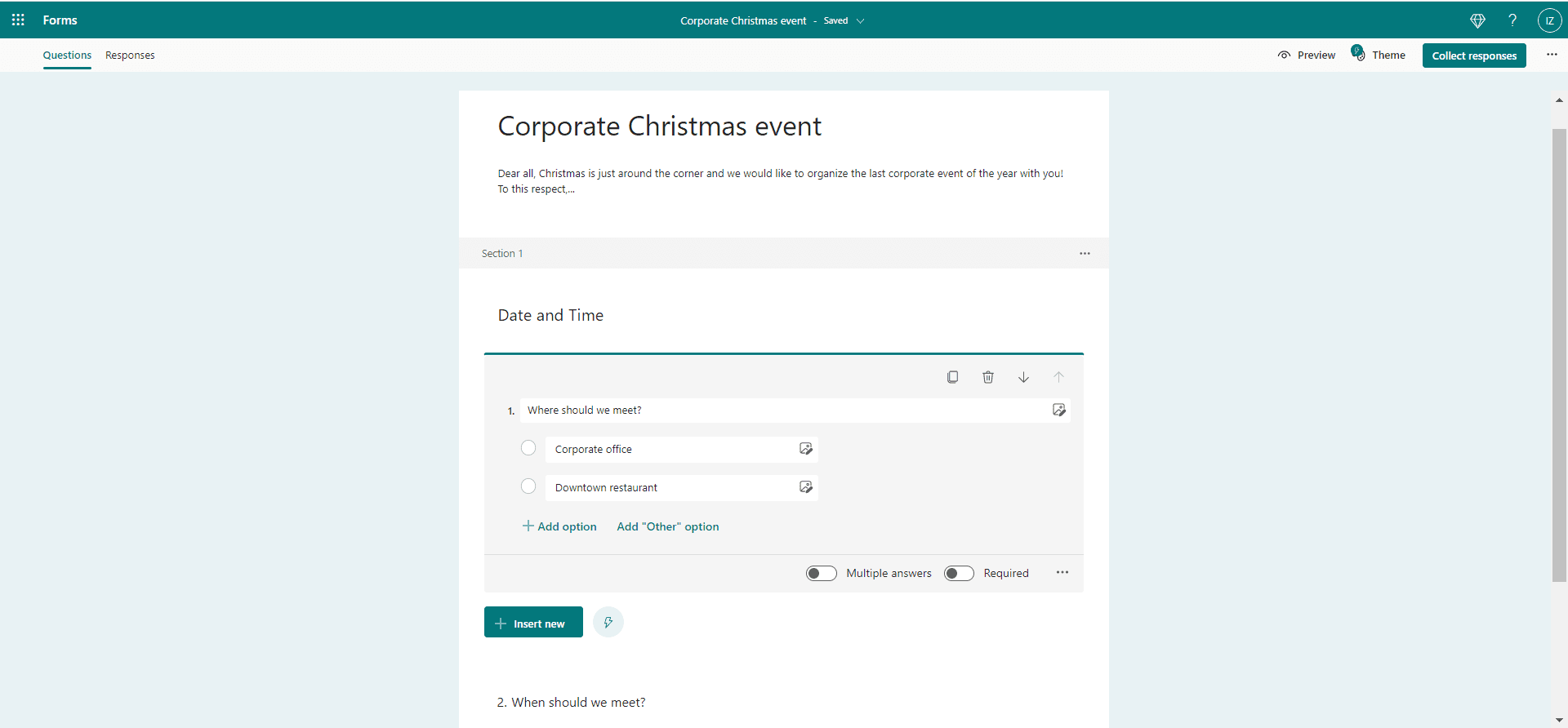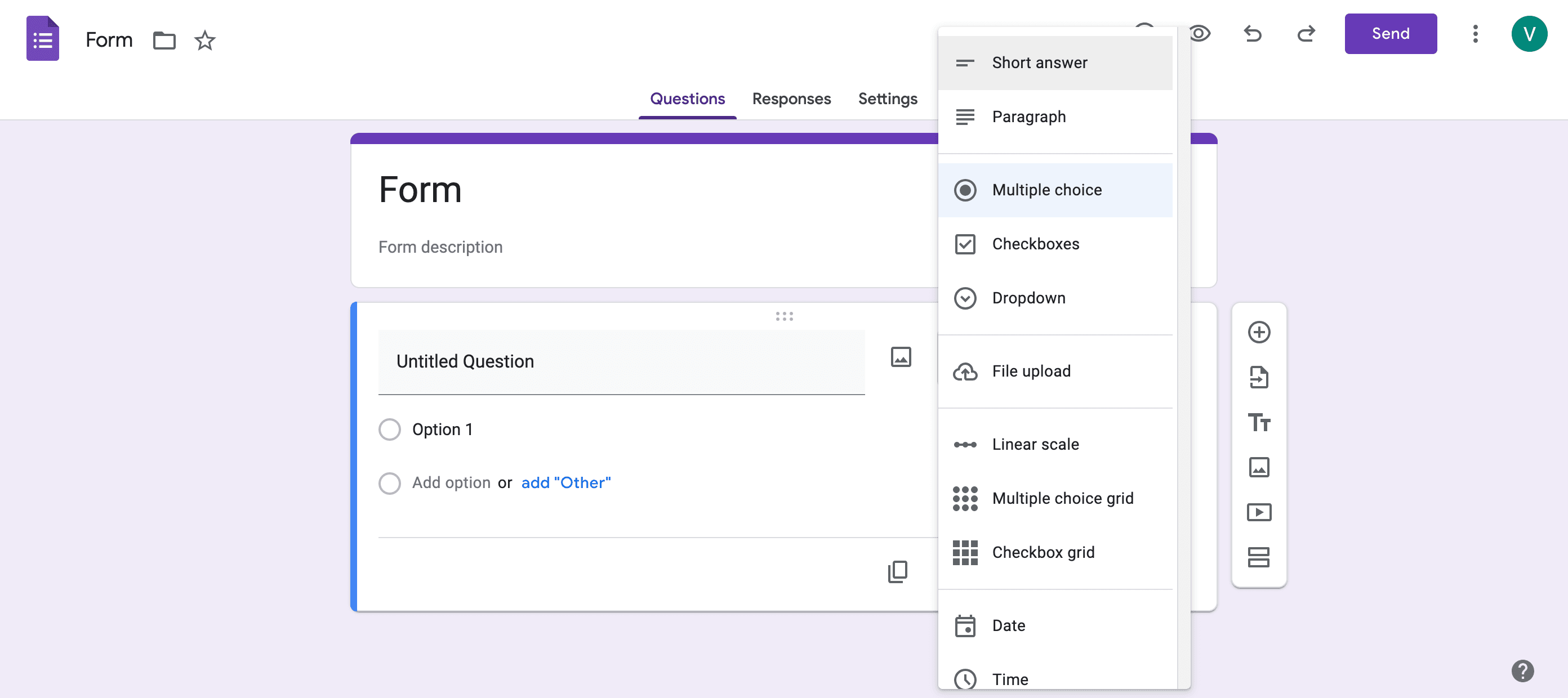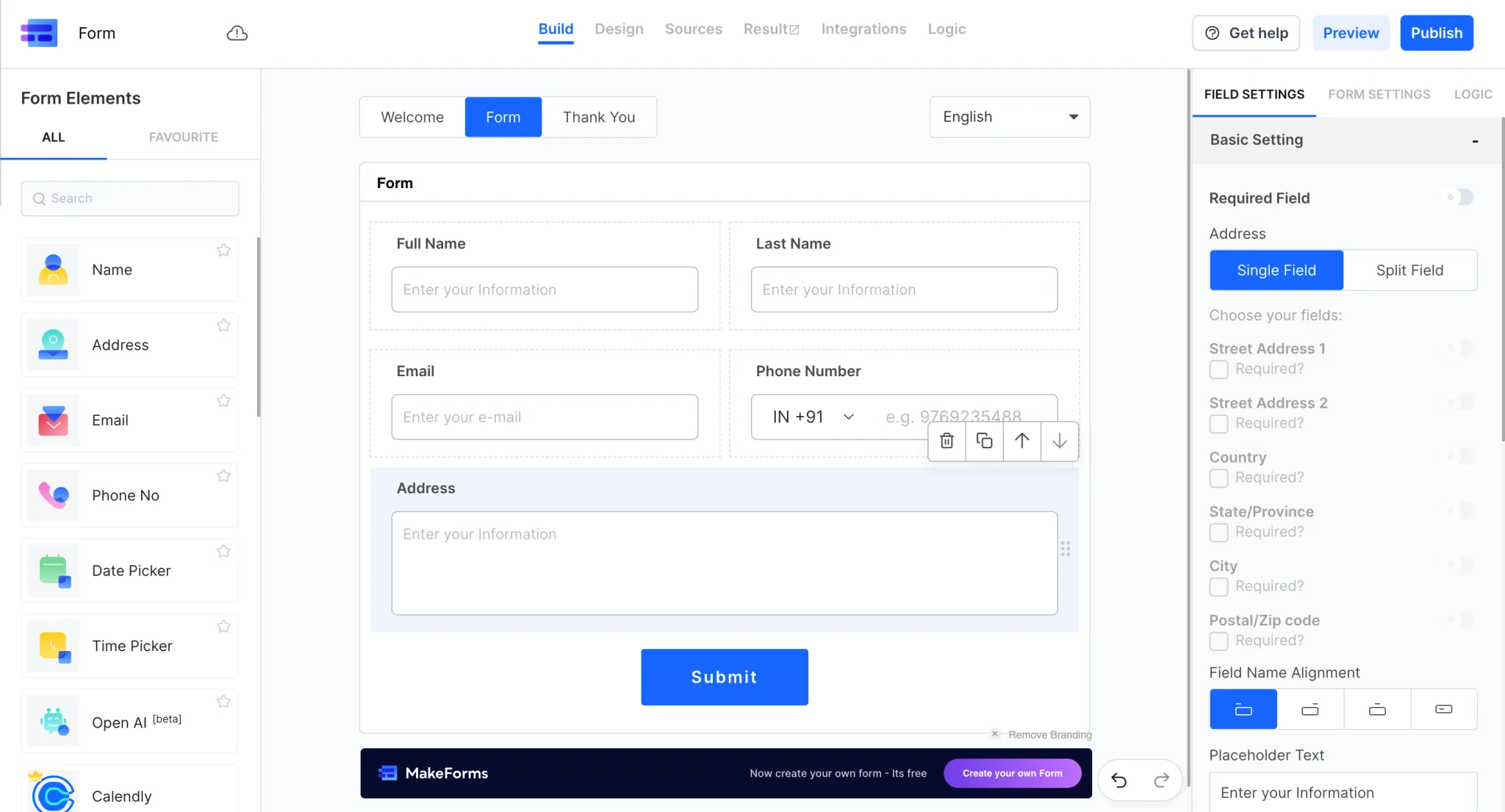If you’re already using Microsoft 365, Microsoft Forms is the better choice due to its seamless integration with other Microsoft tools like Excel and Outlook, making it easier to manage and analyze form responses within the same ecosystem.
9 Mins Read | September 04, 2024
In today’s world, where gathering information is essential for businesses, organizations, and individuals- efficient data collection is often paired with data analysis to make strategic decisions. Online forms have become one of the easiest and most efficient ways to gather this information. They enable users to create surveys, quizzes, and feedback forms quickly and easily. While there are plenty of options out there, Microsoft Forms vs Google Forms are two of the most well-known online form building tools.

As organizations increasingly rely on digital tools to enhance their operations, choosing between Google Forms and Microsoft becomes essential for maintaining consistency and cost-effectiveness. Both Microsoft Forms and Google Forms offer robust features, but each is tailored to different needs and preferences.
If you’re deciding between the two, this blog will help you compare microsoft forms with google forms, weigh the pros and cons of each platform, so you can choose the one that best online form building meets your data collection needs.

Microsoft Forms is an obvious choice for organizations already using Microsoft 365, because it integrates seamlessly with other Microsoft products. This makes it an attractive option for businesses that rely on file sharing across teams.
But what if you’re not already using Microsoft 365, what if you have very specific enterprise requirements from your form builder- what then?Now, let's explore the Microsoft Forms pros and then the cons.

Before diving into the pros and cons, let’s talk about why so many people choose this tool to gather data. Microsoft Forms vs Google Forms is a frequent comparison because both tools offer strong features, yet Google's web based app stands out for its flexibility.
Whether you're looking to gather feedback, conduct research, or manage event registrations, this form building tool provides a range of features that make the form creation process easier and more efficient for you.
Now, let's explore the Google Forms pros and then the cons.
When it comes to choosing between Microsoft Forms vs Google Forms, the best way to look at it is through the lens of the key features. Both tools can help you create surveys, multiple choice quizzes, and forms, but they differ in terms of customization options, functionality, and integration. Understanding these key differences can help you decide which web based app is best for your needs.
Let’s compare Microsoft and Google Forms and see how they stack up against each other in key areas.
Both Microsoft and Google Forms offers various user-friendly templates and question types to make form creation easy. Unlike Google Forms, Microsoft Forms offers simple but fewer templates for quizzes, surveys, and feedback forms. On the other hand, Google Forms offers a wider range of templates and more complex question types, such as file uploads and grid scales.
Who wins? Microsoft Forms wins for simplicity and ease of use, while Google Forms has a more advanced features and template library for custom forms.
Google Forms excels in its ability to support multimedia elements.sers Users can add images and videos within their forms. This feature is particularly useful for creating interactive form-based questions, surveys or educational quizzes. While MS Forms does offer basic image support, it doesn’t integrate multimedia elements as effectively as Google Forms does.
Who wins? Google Forms takes the lead for multimedia support
Conditional logic is a feature that allows forms to change dynamically based on the user's previous answers. Google Forms offers this feature, making it more flexible for creating complex forms that adapt to different responses. Microsoft Forms, however, does not include this, which limits its ability to create forms that are dynamic and responsive.
Who wins? Google Forms wins for adaptability
Both form-builders integrate well with tools within their respective ecosystems. Microsoft Forms works seamlessly with Microsoft 365 products like Excel and Outlook, making it ideal for users already entrenched in the Microsoft Office environment. Google Forms, offers broader compatibility with third-party applications and seamlessly integrates with Google Workspace tools like Google Sheets, and Docs. This broader compatibility makes this tool a better option for users who need to connect their forms with various other software outside the Google or Microsoft Office ecosystems.
Who wins? Microsoft Forms wins for those deeply integrated into the Microsoft ecosystem, while Google Forms is better for broader compatibility.
Microsoft Forms offers a free version for its individual users but this comes with some limitations. To access more key features and enhanced security, a Microsoft 365 subscription is required. Pricing for Microsoft 365 starts at $6.99 per month for individuals.
Google Forms is entirely free for anyone with a Google account, offering generous storage and most of the key features at no cost. For businesses using Google Workspace, which starts at $6 per user per month, Google Forms is included with additional features and enhanced security.
Who wins? Microsoft Forms wins for those already using Microsoft 365, while Google Forms is a more cost-effective option for individual users.
Microsoft Forms lets users collaborate for real-time mainly within the Microsoft ecosystem, making it easy to share forms with colleagues using tools like Microsoft Teams and Outlook.
Google’s form builder excels in real-time collaboration, allowing multiple users to edit a form simultaneously. Sharing options are flexible, with the ability to send links, embed forms, or file through Google Drive, making it suitable for a wide range of users.
Who wins? Microsoft Forms wins for seamless integration within the Microsoft ecosystem, while Google Forms is the go-to for broader, more flexible collaboration features.
In summary, Microsoft Forms vs Google Forms comparisons often focus on how Google Forms excels in data analysis features, including integrations with Google Data Studio for better visualization. Google Forms generally offers superior customization, more advanced features, and broader integrations compared to Microsoft Forms. Google Forms is also often preferred in educational settings due to its simplicity and ease of access for both students and teachers. However Microsoft Forms is a strong option for users already within the Microsoft ecosystem who need straightforward form building tools that seamlessly integrate with their existing ecosystem. For personal use, Microsoft Forms can be a better choice for those who are familiar with Microsoft Office and prefer its interface.
But if you’re looking for a comprehensive solution that combines the strengths of both Microsoft Forms and Google Forms, MakeForms is a fantastic option
| Sr. No. | Criteria | Microsoft Forms | Google Forms | MakeForms |
|---|---|---|---|---|
| 1. | Interface and Usability | Clean and user-friendly interface | User-friendly interface | Easy to use and intuitive interface |
| 2. | Customization | Basic and Limited Customization Available | Extensive Customization Available | Extensive Customization Available |
| 3. | Submissions | Limited Submissions | Unlimited Submission | 5000 - 150000 per month |
| 4. | Integrations | Integrates with Microsoft Office 365 | Integrates with Google Workspace | Integrate various platforms like Zapier, Analytics & etc |
| 5. | Data Analysis | Data analysis with Power BI | Basic Google Sheets for analysis | Data analysis with Data Pilot using AI |
| 6. | Type of Forms | Limited Submissions | Step Forms, Full Forms | One at a time, Step Forms,Full Forms |
| 7. | Use Cases | Ideal for collecting feedback, conducting surveys, and creating quizzes | Similar use cases as Microsoft Forms | Ideal for highly customizable forms and complex data collection needs with robust security features |
| 8. | Number of templates | Limited templates available | Can change colors only | 100+ templates available |
| 9. | Question Types | Offers various question types | Basic question types | Wide variety of question types |
| 10. | Mobile-Friendly | ✓ | ✓ | ✓ |
| 11. | File Storage | - | 15 GB per user | Flexible storage solutions as per plan |
| 12. | Conditional logic | Limited capability | Limited capability | Extensive conditional logic |
| 13. | File Uploads | Supports file uploads | Supports file uploads | Supports file uploads |
| 14. | Esignature | ✓ | Not | ✓ |
| 15. | Advanced Features | Offers a range of question types including multiple-choice, short answer, and checkboxes, etc. | Provides branching logic to direct respondents based on their answers. | Extensive conditional logic and branching options |
| 16. | Price | Included with Microsoft Office 365 | Included with Google Workspace | Starts from $29 / mo |
MakeForms brings together the best elements of Microsoft Forms and Google Forms with its intuitive interface and easy integration with various tools, advanced customization options, and more advanced analytics.

Whether you need simple online surveys or complex forms with branching logic features and multimedia elements, MakeForms can handle it all. It’s designed to meet diverse data collection needs efficiently.
But there's more - MakeForms enables teams to create surveys that are advanced, visually striking with cutting-edge security standards, all enhanced by AI capabilities.
If you’re already using Microsoft 365, Microsoft Forms is the better choice due to its seamless integration with other Microsoft tools like Excel and Outlook, making it easier to manage and analyze form responses within the same ecosystem.